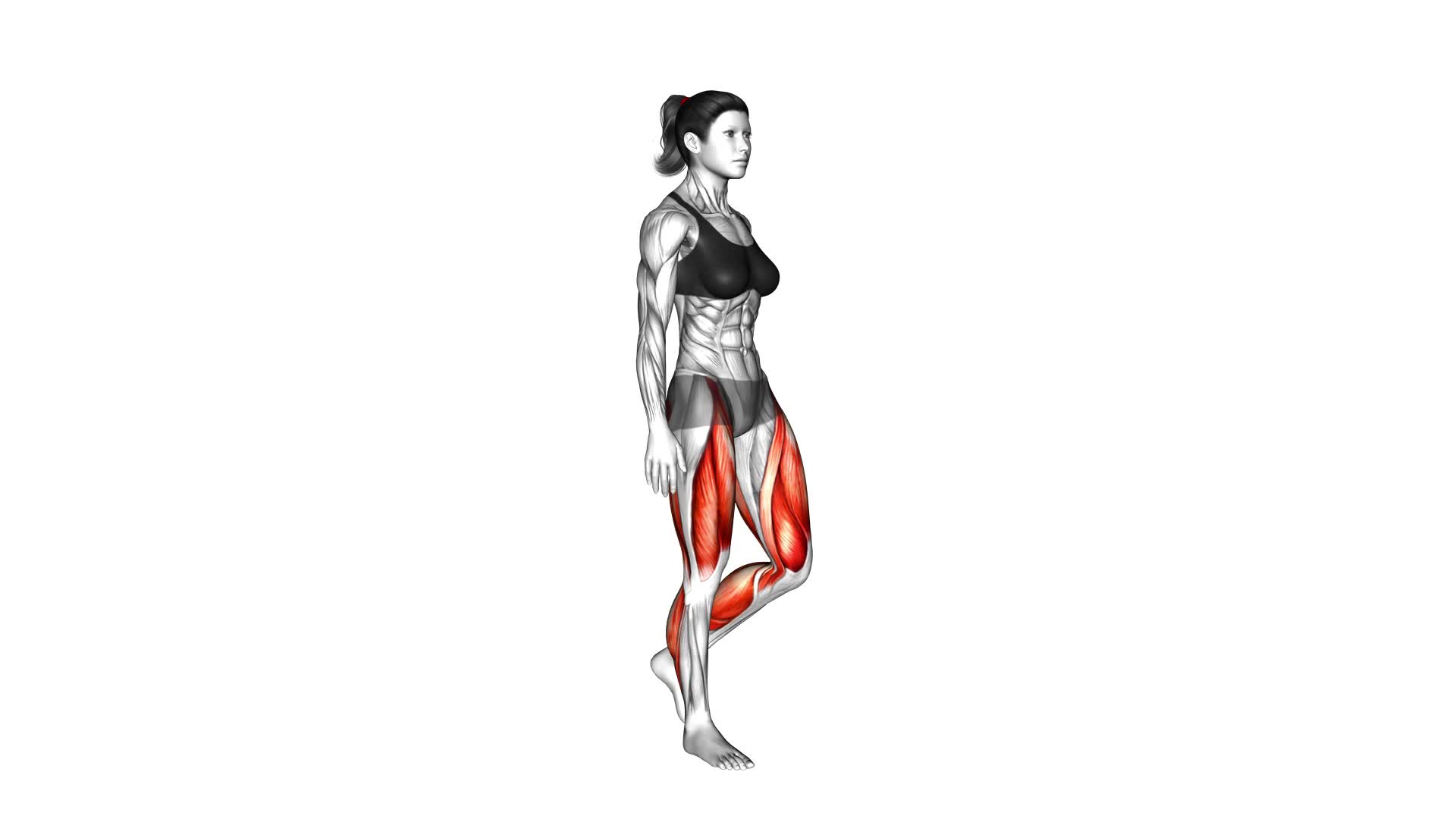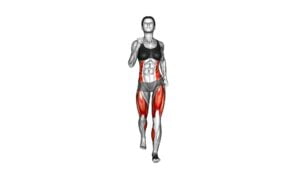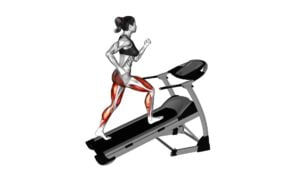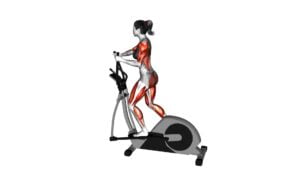Walking (female) – Video Exercise Guide & Tips

Are you ready to take your exercise routine to the next level? Look no further than walking!
Watch This Exercise Video
This video exercise guide and tips specifically designed for women will show you how to get started, what gear you need, and the proper technique for maximum efficiency.
With easy-to-follow videos and helpful tips, you'll learn how to create an effective walking routine and even incorporate interval training.
Get ready to walk your way to fitness success!
Key Takeaways
- Walking is a low-impact exercise that is accessible to women of all fitness levels.
- Walking improves cardiovascular health, reduces stress, and boosts mood.
- Investing in proper walking gear, such as good shoes and a fitness tracker, can enhance the walking experience.
- Incorporating interval training and staying motivated are key to maximizing the benefits of walking.
Why Walking Is Perfect for Women
Walking is the perfect exercise for women because it can be done at any time of the day. Whether you're looking to shed some pounds or stay active during pregnancy, walking is a fantastic choice. Not only is it a low-impact exercise, but it also helps in burning calories and toning your muscles. When it comes to weight loss, walking is a great option because it's accessible to everyone, regardless of fitness level. You can start with short walks and gradually increase your distance and pace as you build up your stamina.
Walking not only helps in shedding those extra pounds but also improves cardiovascular health, reduces stress, and boosts your mood.
For pregnant women, walking is a safe and effective way to stay active during pregnancy. It helps in maintaining a healthy weight, reducing pregnancy discomfort, and preparing you for labor. However, it's essential to consult with your healthcare provider before starting any exercise routine during pregnancy.
Now that you understand the benefits of walking for women, let's move on to the next section, where we'll discuss the essential walking gear you need to get started on your fitness journey.
Getting Started: Essential Walking Gear
Ready to take your walking routine to the next level?
Before you hit the pavement, it's important to have the right gear to maximize your comfort and performance.
From must-have walking accessories to choosing the right shoes, this discussion will cover all the essentials you need to get started on your walking journey.
Must-Have Walking Accessories
To get started with walking, you'll need a few essential accessories. These walking accessories are must-haves to ensure you have a comfortable and enjoyable walking experience.
First and foremost, invest in a good pair of walking shoes. Look for shoes that provide proper support and cushioning to protect your feet and joints.
Additionally, consider getting moisture-wicking socks to keep your feet dry and prevent blisters.
Another essential walking gear is a water bottle to stay hydrated during your walks.
It's important to have a reliable way to track your progress, so a fitness tracker or pedometer is highly recommended.
Lastly, don't forget about sun protection – a hat, sunglasses, and sunscreen are essential to keep you safe from harmful UV rays.
With these must-have accessories, you'll be well-equipped for your walking journey.
Choosing the Right Shoes
Invest in a pair of walking shoes that provide proper support and cushioning to ensure a comfortable and enjoyable walking experience.
Comfortable footwear is essential for preventing foot injuries and keeping your feet happy while you walk. Look for shoes that have a cushioned insole and good arch support to absorb shock and reduce strain on your feet. The shoes should also have a flexible sole that allows your feet to move naturally.
When trying on shoes, make sure they fit well and provide enough room for your toes to move freely. Remember, the right pair of shoes can make all the difference in your walking routine. So take the time to find the perfect pair and get ready to hit the pavement with confidence and comfort.
Now that you have the right shoes, let's move on to the next section and learn about proper walking technique: tips for maximum efficiency.
Proper Walking Technique: Tips for Maximum Efficiency
Start by finding a comfortable walking pace that allows you to maintain a steady rhythm and stride.
When it comes to proper walking technique, two key elements to focus on are your walking posture and breathing techniques.
Maintaining good posture is essential for maximum efficiency and preventing unnecessary strain on your muscles and joints. Stand tall with your head up, shoulders back, and abdominals engaged. Avoid slouching or leaning forward, as this can cause back pain and fatigue. Keep your arms relaxed and swinging naturally at your sides to help maintain balance and engage your upper body.
In addition to proper posture, paying attention to your breathing can greatly enhance your walking experience. Take deep breaths in through your nose, filling your lungs with oxygen, and exhale through your mouth. This helps to increase oxygen flow to your muscles, keeping them energized and reducing fatigue. Focus on breathing deeply and rhythmically, syncing your breath with your steps. This not only helps to oxygenate your body, but it also promotes a sense of calm and relaxation.
By implementing these tips for proper walking technique, you'll be able to maximize your efficiency and get the most out of your walking workouts. Remember to start at a comfortable pace and gradually increase your speed and intensity as your fitness level improves.
How to Create an Effective Walking Routine
To effectively create a walking routine, continue implementing the tips for proper walking technique that were discussed in the previous subtopic. Now that you have mastered the correct walking form, it's time to create a schedule that works for you and incorporate walking into your daily routine.
The first step in creating a walking routine is to set a specific time for your walks. Whether it's in the morning, during your lunch break, or in the evening, choose a time that you can commit to on a regular basis. Creating a schedule will help you stay consistent and make walking a habit.
Next, determine the duration of your walks. Start with a realistic goal, such as 30 minutes, and gradually increase the time as you build stamina. Remember, consistency is key, so aim to walk at least five days a week.
Incorporating walking into your daily routine is easier than you may think. Instead of driving to the grocery store or your workplace, consider walking if it's within a reasonable distance. You can also take short walking breaks throughout the day, such as walking around the block during your lunch break or taking the stairs instead of the elevator.
Adding Intensity: Incorporating Interval Training
Ready to take your walking routine to the next level? Adding intensity through interval training can help you burn more calories, increase your endurance, and improve your overall fitness.
By alternating between periods of higher intensity and lower intensity, you'll challenge your body in new ways and see even greater results.
Let's explore the benefits of intervals and some interval training techniques that you can start incorporating into your walks today.
Benefits of Intervals
Begin by incorporating intervals into your walking routine to maximize the benefits and add intensity to your workouts. Interval training offers a range of advantages that can take your fitness journey to the next level. Here are some benefits to consider:
- Increased calorie burn: Intervals elevate your heart rate, boosting your metabolism and helping you burn more calories during and after your workout.
- Improved cardiovascular fitness: By alternating between high-intensity bursts and active recovery periods, interval training challenges your heart and lungs, improving their efficiency and endurance.
- Time-efficient: Incorporating intervals allows you to achieve the same benefits in a shorter amount of time compared to continuous exercise.
Now that you understand the benefits, let's dive into the different interval training techniques that you can incorporate into your walking routine.
Interval Training Techniques
To add intensity to your walking routine and incorporate interval training, try these effective techniques.
Interval training benefits your fitness level by challenging your body to work harder and burn more calories.
One technique is the '30-60s', where you walk at a moderate pace for 30 seconds and then increase your speed to a brisk walk or light jog for 60 seconds.
Another technique is 'hill repeats', where you find a hill and walk up it at a fast pace, then walk down to recover. Repeat this for several intervals.
You can also try 'pyramids' where you gradually increase the duration of your high-intensity intervals, then decrease them.
Remember to warm up and cool down properly before and after your interval training sessions.
Keep pushing yourself and enjoy the benefits of interval training!
Staying Motivated: Tips for Long-Term Walking Success
Stay motivated for long-term walking success by setting achievable goals and tracking your progress along the way. Staying motivated is essential to maintain your commitment to walking and achieve long-term success.
Here are some tips to help you stay motivated on your walking journey:
- Mix it up: Variety is the spice of life, and it applies to walking too. Keep things interesting by exploring new routes, walking in different environments, or even trying out different walking techniques. This will prevent boredom and keep you engaged in your walking routine.
- Find a walking buddy: Walking with a friend or a group can make your walks more enjoyable and provide accountability. Having someone by your side can boost your motivation, provide support, and make your walks more social.
- Reward yourself: Celebrate your accomplishments along the way. Set small milestones and reward yourself when you reach them. It could be treating yourself to a massage, buying new walking gear, or indulging in a favorite healthy snack. Rewards can help you stay motivated and give you something to look forward to.
Frequently Asked Questions
Can Walking Help With Weight Loss?
Walking can definitely help with weight loss! It's a low-impact exercise that burns calories and gets your heart pumping. While running may burn more calories in a shorter amount of time, walking is a sustainable option that can be incorporated into your daily routine.
Plus, walking has numerous benefits for mental health. It can reduce stress, boost your mood, and improve overall well-being.
Is It Necessary to Wear Specific Shoes for Walking?
When it comes to walking, wearing the right shoes is important. Proper footwear provides support, stability, and cushioning, reducing the risk of injuries and discomfort. It also helps maintain good posture and prevents strain on your feet, ankles, and knees.
Different terrains offer various benefits for your muscles and cardiovascular system. Walking on uneven surfaces or uphill challenges your body, improving balance, strength, and endurance.
How Many Steps Should a Woman Aim to Take per Day When Starting a Walking Routine?
When starting a walking routine, it's important to set a goal for the number of steps you should aim to take per day. This not only keeps you motivated, but also helps you track your progress.
As a woman, you should aim to take around 10,000 steps per day. This may seem like a lot, but don't worry! Walking has incredible health benefits, including weight loss benefits.
Can Walking Help Reduce the Risk of Certain Health Conditions in Women?
Walking can definitely help reduce the risk of certain health conditions in women. Regular walking can improve cardiovascular health by strengthening the heart and improving circulation. It can also help maintain healthy bone density, reducing the risk of osteoporosis.
What Are Some Tips for Preventing Boredom During Long Walks?
Preventing boredom during long walks is important for improving mental focus and staying motivated. To keep things interesting, try changing up your walking route or exploring different trails.
Listening to music, podcasts, or audiobooks can also help pass the time and keep your mind engaged.
Another idea is to invite a friend or family member to walk with you and enjoy some conversation along the way.
Conclusion
In conclusion, walking is a fantastic exercise option for women. It requires minimal equipment, can be easily incorporated into your daily routine, and offers numerous health benefits.
By following proper technique and gradually increasing intensity, you can maximize your efficiency and achieve your fitness goals. Remember to stay motivated and make walking a long-term habit for continued success.
Lace up your shoes, step outside, and start enjoying the many benefits of walking today!

Author
Years ago, the spark of my life’s passion ignited in my mind the moment I stepped into the local gym for the first time. The inaugural bead of perspiration, the initial endeavor, the very first surge of endorphins, and a sense of pride that washed over me post-workout marked the beginning of my deep-seated interest in strength sports, fitness, and sports nutrition. This very curiosity blossomed rapidly into a profound fascination, propelling me to earn a Master’s degree in Physical Education from the Academy of Physical Education in Krakow, followed by a Sports Manager diploma from the Jagiellonian University. My journey of growth led me to gain more specialized qualifications, such as being a certified personal trainer with a focus on sports dietetics, a lifeguard, and an instructor for wellness and corrective gymnastics. Theoretical knowledge paired seamlessly with practical experience, reinforcing my belief that the transformation of individuals under my guidance was also a reflection of my personal growth. This belief holds true even today. Each day, I strive to push the boundaries and explore new realms. These realms gently elevate me to greater heights. The unique combination of passion for my field and the continuous quest for growth fuels my drive to break new ground.







